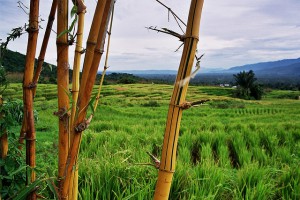Organic rice cultivation supports aquatic biodiversity
A recent study published in Basic and Applied Ecology sought to understand how the use of agrochemicals, water management and mechanization in conventional rice fields affected biodiversity and whether organic rice cultivation techniques could provide a solution. For the study, researchers sampled species richness and abundance in conventional and organic rice fields as well as natural ponds, with the latter expected to have the highest diversity because they provide undisturbed habitat. Biodiversity from all three habitats were compared from four of each type of habitat. As expected, findings showed natural ponds exhibited the highest levels of biodiversity. Although conventional and organic rice fields did not significantly differ from each other in the number of different species sampled, many of the species collected from organic rice fields were only found in natural ponds and not in conventional rice fields suggesting that organic rice fields supported a more natural assemblage of organisms. Furthermore, the macroinvertebrates typically found in ponds and organic rice fields but not conventional rice fields were natural predators. “Our results should be seen as an incentive for sustainable production with less impact on the environment,” the authors wrote.




